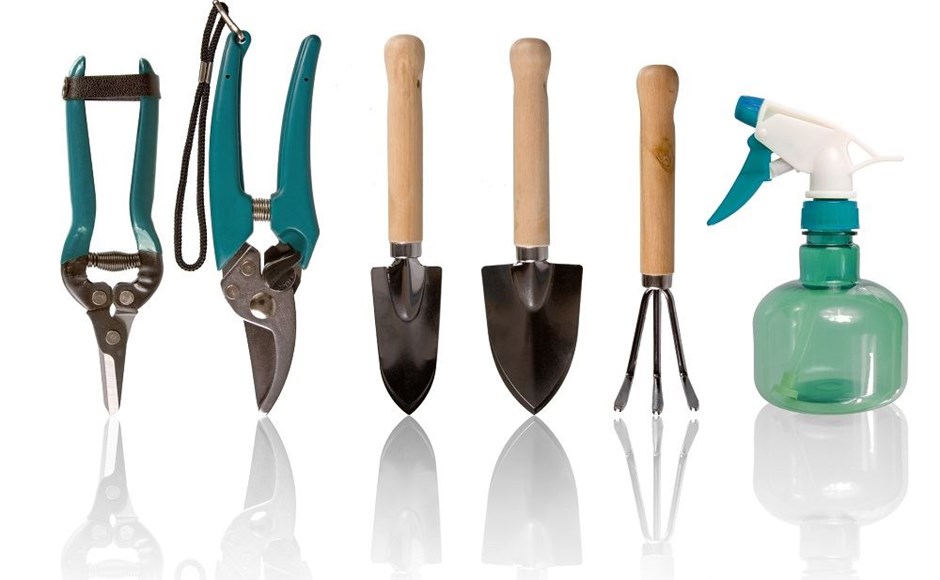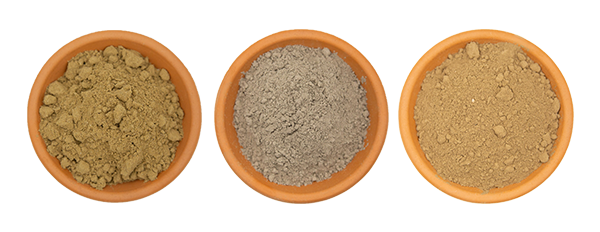Accessorizing Your Growroom: Essential Tools and Tech
By Thomas Forrest | 1 December 2016

Source: Georgemuresan/Dreamstime.com
Takeaway: From little things, big things grow! Here are a few ways to accessorize your garden once your growroom is up and running.
Indoor gardening requires a vast range of equipment and supplies to help replicate the beautiful outdoor environment. Initially, starting an indoor garden can be overwhelming and confusing, but once you have the essentials in place, it’s all about accessorizing and upgrading to give your crops the best growing conditions possible.
In this article, we break down the fundamental accessories and recent technological advances that will give you the greatest advantages in your garden. Indoor gardening accessories can be divided into three main categories: environmental monitoring, climate control and crop-manipulation products.
Environmental Monitoring in the Grow Room
Controlling the air temperature and relative humidity levels are essential for creating an optimal growth environment. These factors can be controlled with appropriate air conditioning, ventilation and lighting arrangements. There are several eco-system-monitoring products that will give you a better understanding of your growroom’s current environmental conditions and the influence they have on your end-harvest.
Hygrometers – Hygrometers are relatively cheap instruments used to measure temperature and humidity. Place the probes above and below the canopy to accurately display comprehensive information about the environmental conditions within your growroom. Hygrometers range in quality and durability, so talk to your local garden shop to ensure you select an appropriate model.
Hygrometers also ensure your temperature fluctuations are not outside the norm for your selected produce. The ideal temperature during the day is around 80 oF, although this varies according to your use of CO2 supplementation and choice of ventilation. Try to avoid temperature declines of more than 60oF at night, as this can cause excessive humidity or mold problems, especially during the blooming phase.
pH and EC Monitors – Measuring pH and EC in traditional or hydroponic growing methods is important. Luckily, there are plenty of useful accessories to help you understand these factors—new technology has allowed for affordable, extremely accurate digital-testing pens and automated dosing equipment.
pH and EC measuring pens are generally durable, easy to use and a reliable means of monitoring small- to medium-sized crops, while larger monitors and controller modules allow growers to completely automate the nutrient solution and pH adjustment processes.
Climate Control in the Grow Room
Once you understand your growroom’s environment, the next step is to try to replicate the natural environment for your selected plant species. This involves the controlled regulation of lighting, temperatures, airflow, relative humidity and carbon dioxide levels.
With hydroponic systems, we also need to ensure we provide an ideal setting for plants’ root masses, including maintaining reservoir temperatures, dissolved oxygen concentration, and pH and EC levels. By selecting and optimizing the appropriate accessories, you can fine-tune your horticultural variables and get the very best harvest from your plants’ genetics.
Heat Mats – Depending on your location, the first accessory to assist with climate control is a propagation temperature fixture to assist with starting seeds or cuttings. In colder climates, this generally involves heat mats. When selecting your heating accessories, we recommended first ensuring you have a thorough understanding of your current and future climatic conditions, along with the desired conditions of your chosen plant species.
Premium heating equipment should always include a variable thermostat, although measures can be taken to prevent under- or overheating. Some manufacturers recommend placing an insulating layer below the mat to increase temperatures, or between the mat and your propagation dome to reduce substrate temperatures.
A warmer substrate will increase underground chemical activity, and a lower ambient air temperature will slow transpiration. For best results, keep your rooting medium between 75 and 80oF, and the air temperature 40-50oF cooler than the substrate.
Water heaters – When using aeroponics, deep water culture (DWC) or a recirculating hydroponic system, a water heater may be required depending on your climate or growroom location. A well-aerated reservoir should be kept at an optimal temperature of 60-72oF. If your reservoir temperature is any lower, plant growth may be stunted.
If your temperatures reach any higher than 80oF, less oxygen is available for plants and the roots will become more susceptible to rots, wilts and pest attacks. Always ensure your water heater has a built-in thermostat controller and remains fully submerged. If a heater dries out, it can burn out and quickly become a fire hazard.
Crop Manipulation
We aimed the last collection of accessories at helping growers with one very important aspect: manipulating their plants to increase yields and the overall value of their crop. There is a wide range of accessories available, depending on whether you are producing fruits, vegetables or herbs, and your selected growing technique. For now we’ve focused on the main products that can help with small- to medium-sized indoor endeavors.
Trellising – Depending on your room’s size and your budget restrictions, it may be advantageous to develop more vegetative growth in the room and use a SCROG (screen of green) technique to maximize the harvest from every individual plant. Horticulturalists have designed SCROG nets designed for 6.5-16-sq.-ft. areas that will encourage horizontal growth and spread.
This allows for more light absorption, faster floral growth and a much heavier end-harvest. This technique can also involve using a range of trellises, ties, weights or specific pruning procedures, but generally a net is the most common means of SCROG gardening.
Your local hydroponics shop should have a range of accessories that can help you have fun with advanced plant training and trellising techniques. Cheaper items such as yo-yo hangers with stoppers can help with fruit and flower support during late floral development, while clips and other basic stakes can be a cost-effective means of pushing or relocating branches for optimal light absorption and spacing during both vegetative and floral growth.
Light Movers – When attempting to maximize your yield in a small area, it’s worth taking a look at light movers. The general misconception is that light movers are only designed to increase the coverage area of a fixture, but the correct use of light movers also reduces the shade-avoidance mechanism in plants.
With a light mover, the angle of light incidence received by the lower leaves and stems will be continuously changing, so the red to far-red phytochrome ratio will be kept at optimal levels. Light movers ensure healthier and more natural plant growth and consistent canopy distribution. They also allow lower lamp heights, providing a greater light intensity for your crops.
Supplemental CO2 – Our final favorite “accessory” to help you with your indoor gardening isn’t a physical object, but an odorless, colorless, essential gas. You guessed it, it’s CO2! Boosting the carbon dioxide levels in your growroom increases growth or biomass production in almost all plant species.
New advancements have allowed for products like CO2 pads and super-efficient, slow-release CO2 bottles to replace propane burners and regulating equipment. These accessories generally last for 2-4 weeks and are great for rooms up to 13 ft. by 13 ft.
For larger rooms, CO2 tanks with regulators and solenoid valves are the most cost-effective way to naturally boost your grow. Plants only consume CO2 when the lights are on and photosynthesis is occurring, so plan your use of CO2 to work in conjunction with your lighting and ventilation timing.
Overall, these accessories should certainly not be the first items purchased when setting up an indoor garden. It’s always important to budget accordingly and ensure you get the best basic essential equipment for your desired purpose.
Only after you have the necessities in place does it become time to accessorize and upgrade your room. Every single grow is a learning curve. You can aim to improve your quality and quantity with every harvest by incorporating the various technologies mentioned in this article in your growroom.
Original article click here



